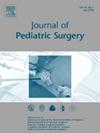The Age-stratified Cost of Biliary Atresia: A MarketScan®-Based Cost Analysis
IF 2.4
2区 医学
Q1 PEDIATRICS
引用次数: 0
Abstract
Introduction
Biliary atresia (BA) is the leading cause of childhood liver failure requiring liver transplantation. Early diagnosis and Kasai portoenterostomy (KP) offer the only opportunity to avoid liver failure and transplantation. This study aimed to assess BA healthcare costs in the United States. We hypothesized that patients who underwent KP before 60 days of age would incur lower healthcare costs than patients who underwent KP at 60 days or older.
Methods
Using MarketScan® (Truven Health Analytics), we evaluated cumulative healthcare costs for BA patients who had KP at less than 60 days (early KP), at 60 days or older (late KP), or had liver transplant – primarily or following KP. Cumulative costs were calculated at one-, three-, and five-year intervals, stratified by age at KP and transplant status. ANOVA univariate and Gaussian multivariate analyses were performed.
Results
170 children with BA were identified: 86 underwent early KP (50.6 %), 78 underwent late KP (45.9 %), and six were primarily transplanted (3.5 %). 101 patients (59.4 %) were enrolled in their insurance plan at one year, 45 (26.4 %) at three years, and 23 (13.5 %) at five years. Predicted total costs at three years were $283,035 for early KP (no transplant), $738,958 for late KP (no transplant), and $1,015,806 for patients requiring transplant regardless of KP status.
Conclusion
The average healthcare costs for BA patients are significant and depend upon age at intervention. Nearly 90 % of children experience insurance discontinuity within five years of diagnosis. Early BA diagnosis is integral to optimizing outcomes and minimizing healthcare expenditures.
Type of Study
Retrospective cohort study.
Level of Evidence
3.
胆道闭锁的年龄分层成本:基于市场的成本分析
胆道闭锁(BA)是儿童肝衰竭需要肝移植的主要原因。早期诊断和Kasai门肠造口术(KP)是避免肝衰竭和肝移植的唯一机会。本研究旨在评估美国BA的医疗成本。我们假设在60天前接受KP的患者比在60天或更大年龄接受KP的患者产生更低的医疗费用。方法:使用MarketScan®(Truven Health Analytics),我们评估了发生KP少于60天(早期KP)、60天或以上(晚期KP)或进行肝移植(主要或随后进行KP)的BA患者的累积医疗成本。累积费用按年龄和移植状态按1年、3年和5年的间隔计算。进行单因素方差分析和高斯多因素分析。结果170例BA患儿中,早期KP 86例(50.6%),晚期KP 78例(45.9%),初步移植6例(3.5%)。101例患者(59.4%)在1年内参加保险计划,45例(26.4%)在3年内参加保险计划,23例(13.5%)在5年内参加保险计划。预计三年的总费用为早期KP(无移植)283,035美元,晚期KP(无移植)738,958美元,无论KP状态如何都需要移植的患者1,015,806美元。结论BA患者的平均医疗费用显著且与干预时的年龄有关。近90%的儿童在确诊后的五年内经历保险中断。早期BA诊断对于优化结果和最小化医疗保健支出是不可或缺的。研究类型:回顾性队列研究。证据水平
本文章由计算机程序翻译,如有差异,请以英文原文为准。
求助全文
约1分钟内获得全文
求助全文
来源期刊
CiteScore
1.10
自引率
12.50%
发文量
569
审稿时长
38 days
期刊介绍:
The journal presents original contributions as well as a complete international abstracts section and other special departments to provide the most current source of information and references in pediatric surgery. The journal is based on the need to improve the surgical care of infants and children, not only through advances in physiology, pathology and surgical techniques, but also by attention to the unique emotional and physical needs of the young patient.

 求助内容:
求助内容: 应助结果提醒方式:
应助结果提醒方式:


